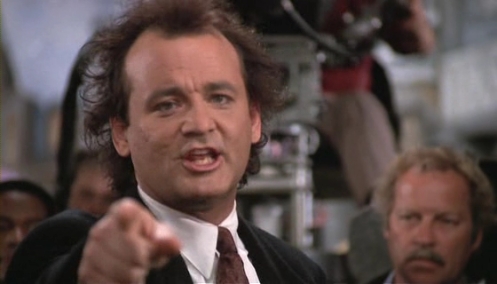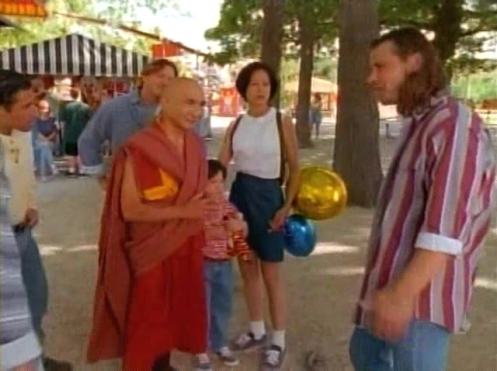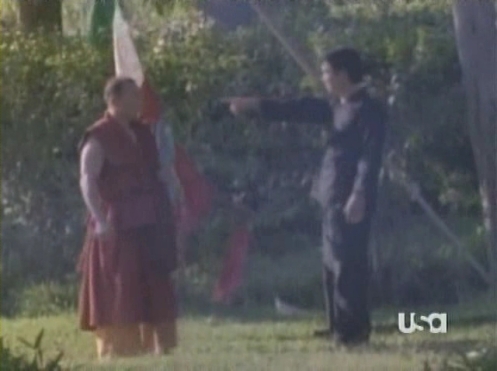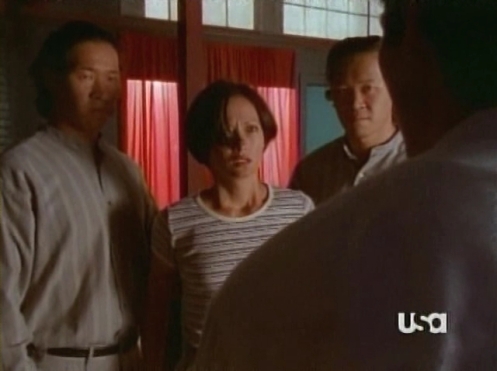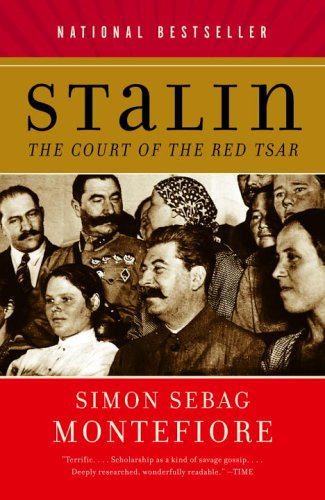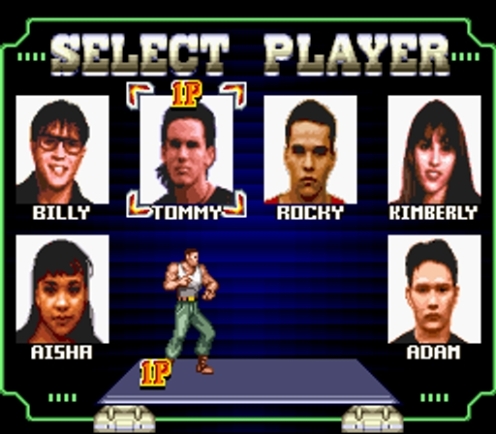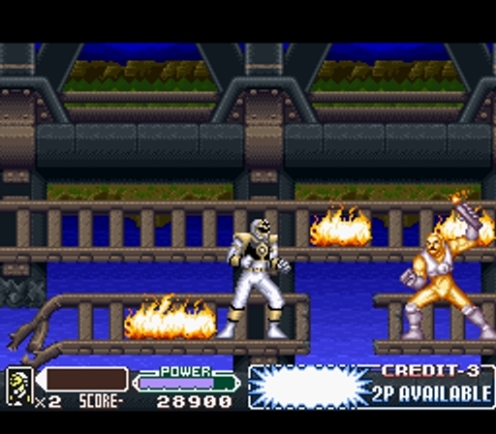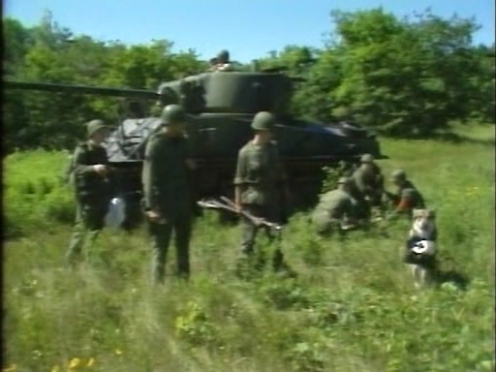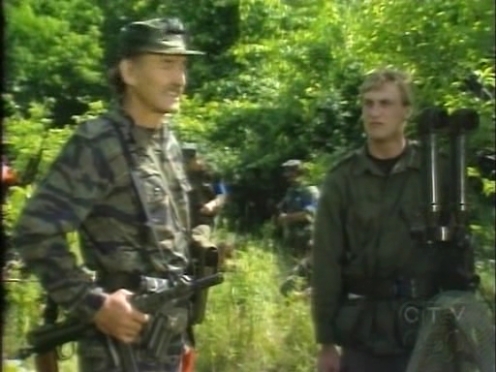I love “Walker, Texas Ranger” because it is insane. Early in the nineties some guys with problems in their brains got together and decided to make a television show based on some books that was kind of like Law & Order if it was an adventure show. The show was boring and everyone hated it (May not be a fact.) but then Chuck Norris lent out his golden pipes to sing for us a theme song in which the chorus accompanies himself. That alone is awesome.
The show went on to get really good, following everyone’s favorite Chuck Norris guy Cordell Walker and his black buddy Trivette as they fought crime throughout Texas and the world, though luckily for them all the world’s crime came to Texas. I’m not joking. In the episode “Second Chance” two competing IRA leaders visit Texas, where apparently Irish pubs filled with Irishmen complete with thick accents is a common thing. Like most episodes following the first couple of boring years, Walker started to get oddly saccharine – one IRA leaders’ daughter traveled to Texas for a transplant. Luckily, Walker has found just the dupe, a boy from a local anti-drug group! His parents are nowhere in sight, before or after a major surgery. In the world of Walker, there are heroes and villains, bad-guys will murder children in a heartbeat but good law-abiding folk tend to be saints on Earth. Speaking of saints, in the episode “Saving Grace” a band of nefarious bank robbers hold Nuns hostage, complete with generic ‘faith’ interludes and shots of doves flying around. Does it mean anything? No. The creators of Walker want to present a wholesome image of good-guys and religion, but they’re always vaguely noncommittal about their portrayal.
Portrayed they were anyway! And how, “Crusader” follows an aging Rowdy Roddy Piper as he literally yells and points at his ceiling for extending monologues with God. It is hilarious, the only thing funnier is another God-centric episode, “In God’s Hands” which is the mother of all very special episodes, following the trial of Walker’s buddy Trivette after he supposedly shoots a kid. I’ll save that for later, because Walker, Texas Ranger is not smart enough for the kind of material it tries to handle. Hell, in the episode “Warriors” its implied Buddhist monks can communicate with people telepathically. That episode was also about genetic super soldier programs funded by Nazis, so maybe they weren’t going for realism.
All this Walker talk is simply to prepare you. “The White Buffalo” does not have Buddhist psychics, super soldiers, Nuns, Irish terrorists, or shooting kids. We’re trading generic Christian pathos with awkward Native American pathos today, and it is worth it.

The episode begins with a little girl named Fawn and her Mother tending a lemonade stand. Fawn is pouting because her Mother can’t get off work tomorrow to take her to the Tall Grass Prairie to visit the spot her father used to take her before he died. The exchange some dialogue, Fawn pleads, but it’s no dice. The lemonade stand would just fall apart with Mommy. Cut to Walker and his girlfriend Alex talking about a White Buffalo while staring at a White Buffalo statue. And yes, Alex is Walker’s girlfriend, though they were both already married in the non-Walker world. Seeing two adults that age that aren’t even engaged yet act like they’ve been married since the beginning of time gets weird. Despite all that, the real importance of that scene is in our introduction to the White Buffalo.
Walker exposits to Alex that the White Buffalo was important to certain Native American religions and that they were real but rare, my miniscule amount of research corroborates you Walker. He also says that a hunter at the Tall Grass Prairie shot a White Buffalo! Wait, wasn’t Fawn going to the Tall Grass Prairie? Get ready for meaningfulness.
Sydney, another one of the Texas Rangers arrives and offers to buy lemonade! Wow, lemonade. It turns out Fawn’s Mom is some kind of lemonade savant, because their lemonade is the best at this entire… fair? Where are they? We also learn that Sydney, a full time Texas Ranger, has more time off than a lemonade stand cashier because she coaches the local Soccer team attended by Fawn! Also, Sydney’s having more fun than the kids, or she says so at least. All this dialogue is so awkwardly delivered and with so many pauses I wonder if the director even did a second take, or if the actors were just reading cue cards. The three laugh it up and arrive at the stand, and Fawn doesn’t take any of Alex’s compliments and storms off. Mommy dearest is interrogated on Fawn, and eventually Alex and Sydney agree to take the girl to the Prairie themselves, to the spot where the White Buffalo was killed. For agreeing to baby-sit, Walker and the women get free lemonade! Score!
Okay, so that’s not exactly exciting material for an episode, not yet at least. Hang onto your butts, turbulence is ahead.
Gage, the white dumb Ranger is with Trivette. The two talk about dating each other and… I’m just going to move on. They get a call on the radio, shots fired at a convenience store. Trivette states the store is only a few miles from them, and Gage suggests they go. Rangers can choose which crimes they respond to? Were they just cruising around? Don’t Rangers have a specific job that separates them from the regular police department? You know what, never mind.
Cut to the convenience store, surrounded by cops. The place isn’t being robbed, instead it’s menaced by two raving jackasses. The scraggly haired guy decides this would be a perfect time for a sing-a-long and grabs a nearby redhead to accompany him in a rousing rendition of “99 Bottles of Beer on the Wall”. This is a thing that happens.

Trivette and Gage arrive just in time! The goons inside constantly fire rounds randomly, in the air and at the police, but these cops just sit there! Were they waiting for the Rangers to come before… I don’t know, doing something? I don’t think its standard procedure for police to just point their guns at madly firing madmen. It’s not like they’d be making the situation any worse. Either way, Trivette and Gage kick ass and save the audience from anymore awkward singing. After the brawl, a paramedic informs the Rangers that the two gentlemen were drugged out, according to his expert medical analysis. He knows what got the two so strung-out, it’s a new drug that just hit the streets. This one isn’t just bad, it’s after-school special bad. The new drug is called White Buffalo (Meaningful!).
Cue Native American chanting and a close-up of the White Buffalo statue super-imposed over fire and a tribal dance. Yep.

The statue of the White Buffalo is crying. This is really happening.
Now we’re at the hospital! Trivette and Gage are interrogating Mick, one of the druggy nut-bunnies. They want to know where he got the drugs. He tells them he got it from some dude named Frasier. Frasier Crane? Radio isn’t as popular as it used to be, but come on.
Walker takes the credit when he returns to the Ranger Station with Trivette. They constantly reiterate how the White Buffalo drug is the strongest stuff they’ve ever seen, like a new bad guy in a crappy comic, everyone has to say just how bad this new guy is or we poor readers might actually have to come to that conclusion ourselves. Walker decides to check out the lead, and the four head on down to a wretched drug den.

It’s a smorgasbord of pleasure! Walker demands they open up, but before they even get a chance, he kicks down the door with gun drawn. The bad guys scramble, and kung-fu happens all over the place. The new rangers succeed in shooting a guy too, so that’s cool for them. Cut to another interrogation scene, Gage and Sydney question one of the druggies named Riker. Number 2, wasn’t the Enterprise enough for you?
Riker doesn’t know nothin’, except that more White Buffalo is about to hit the streets.
And we’re back at the fair, and I spot a sign. The festival is called… “White Buffalo Days”. Huh. I guess that explains the statue. Sydney and Alex pick up Fawn and take her to the Tall Grass Prairie. I’m disappointed, there’s no tall grass. Also, despite the fact Alex was just driving through the field without a road before, they stop the car seven miles away from the spot and walk. Why?
Another scene at Ranger Central that exists solely to tell us White Buffalo is smarter than Batman and stronger than Goku. Apparently, the stuff is a mixture of mescaline, PCP, and heroin. Kind of like Neapolitan ice cream! Walker knows his mescaline, quickly stating that it is a derivative of peyote. His Cherokee ancestry blessed him with that knowledge. Gage suddenly remembers that some guy he busted was on drugs, so maybe he knows about white buffalo! Brilliant! Meanwhile Trivette and Walker form the classic team and head to the reservation to talk to some overdoses.
Fawn and the ladies reach the White Buffalo monument where mementos are left to honor those that have died, no wonder Fawn wanted to come on the one-year anniversary of her father’s death. Suddenly I wonder why her mom didn’t make time.
Not so far away, ominous music hits. In a shack, some ugly guys are playing with their elementary school chemistry kits. Corban is on the phone with some buyers and sets himself up as the boss of this drug shack. WHOOSH! We’re back at the Festival! And… a crowd is forming around the White Buffalo statue. Leona, Fawn’s mom checks it out. Old lady states, “Look, the buffalo is crying!” You’re telling me, lady.

Just look at that. Again. This shot is reused about six times. I’ll try to spare you the rest.
So, White Buffalo is a drug being made with a derivative of peyote (Which is used in some Native American religious ceremony.) near the site where a real White Buffalo was killed by (presumably white) hunters during a festival called White Buffalo Days that features as its main attraction a statue of a White Buffalo that has begun to cry. Yep, Walker is that kind of show.
Native American chants begin as the camera zooms in on this wise old man.

A plucky journalist is already on the scene after the commercial break to report on the crying buffalo statue. She blandly states that there is as of yet no “plausible explanation for the phenomenon” but promises to keep the eager public posted on any new developments. The crowd around the statue is still huge despite hours passing. This entire set-up is obviously knocking off the crying Mary statuary craze of the late ‘90s, but I guarantee no one stood around those statues for more than an hour. I’m just saying, White Buffalo Days must be dull.

Gage interrogates a chump at prison. The guy doesn’t want to give up his dealer, but Gage promises to put in a good word for the prisoner at the D.A.’s office! The prisoner wonders if Gage might shaft him, which sounds like innuendo but isn’t. But, seriously, a word with the D.A.? Come on Gage, these stakes are hardly high but both guys act like this is some hot plea bargain. This deal plain sucks, and of course the prisoner gives up his contact.
Gage sets up a buy with the unnamed dealer, I guess the writers decided naming each and every one of these pointless stepping block criminals was getting too hard.
Alex, Sydney and Fawn take a break from hiking to hear a plane fly overhead. Now isn’t that odd, a plane landing all the way out there. Sydney is on the case, she sets off to check things out.

Corban leads his goon squad to meet the buyer, making sure to position his pistol in optimal crotch-shooting position, with a finger on the trigger even. I’m guessing nobody went over firearm safety with this guy. Another doughy guy in a white shirt, like all Walker, Texas Ranger villains, struts to check out the stuff. Corban orders his Native American friend to open up a suitcase of play money.

Sydney witnesses the trade-off, is caught, and fights a couple of guys, the usual. Another normal day with the Texas Rangers, I guess. She hightails it back over to the other two as goons pursue. Alex states she heard gunfire, Fawn replying that it’s coming from where Sydney went. Alex, clearly with a child’s safety in mind, runs towards the gunfire with Fawn. Sydney runs into Alex and Fawn, with Native American bad-guy right behind. Native American bad-guy appears to be quite the hunter, he brushes the ground for a second and knows just how many is in their group and which way they went. Stereotypes!
Meanwhile, Walker and Trivette lament the ravishes of the White Buffalo. Then Walker gets a phone call, Leona has important news, the White Buffalo Statue is crying! This leads to my favorite line from Trivette, who says what we’re all thinking; “What?” The two senior most Texas Rangers rush off to investigate! But, the old wise man stops them before they can rush off, and apparently his name is Gray Fox (Hehe.) but he doesn’t want Snake to hurt him more so everything is cool. Gray Fox, instead of sacrificing himself in a battle against Metal Gear, informs Walker that the tribal council will be meeting tonight. The council requests Walker’s attendance because they need his help… for something.
The girls are still being chased; Sydney tries to cover her tracks in the sand. This would work, if the two chasers didn’t see her first and open fire. They actually manage to hit her in the shoulder this time. Sydney hides thanks to some careful camera angles that keep the audience from realizing she’s in plain sight of the bad guy. Another brawl ensues, and the bad-guy gets his ass kicked by a girl a second time. She steals his gun and runs, which must be symbolic of his masculinity.
Trivette is asking questions again while Walker drives to the tribal council. “Exactly who is Gray Fox?” He’s the Cyber Ninja, not much to explain, dude. I really feel sorry for Trivette, he is always the one guy with any perspective in this show. Walker explains that Gray Fox is a wise and respected tribal leader. I’m a really good guesser. Trivette explains that the crying buffalo statue is an elaborate hoax to drum up interest in the festival. “It’s a publicity stunt.” He continues, to Walker’s smug bemusement. Walker offers no opinion, but treats Trivette like a petulant child for questioning the authenticity of a crying buffalo statue. Did I ever mention that Walker is kind of a dick in the series? He kind of is.

Sydney meets up with Alex and Fawn. Seeing something called Tiger Moss, Fawn begins to treat Sydney’s wound. Fawn is one with nature, because she is Native American you see. Actually, apparently her father taught her. So I’m just a jackass.
Then Fawn rushes off alone to create a false trail to confuse the bad guys. Sydney’s been shot, but what’ Alex’s excuse? She just stands there as a child runs off alone in a forest prowling with armed criminals. Good one Alex, no wonder you never made D.A.
Corban does the first smart thing this episode. When one of the goons returns to tell him Sydney is still alive and they need more help, he sends help and packs up the rest of the White Buffalo lab, uprooting the operation before cops come. Well played, Corban.
Unsurprisingly, Fawn’s false trails work. Consider yourself bought, time.

Then Walker and Trivette arrive at the Festival! Why? And weren’t they heading for the Tribal Council? I don’t even know anymore. This episode is all interrogations and driving. Walker orders Trivette to get a sample of the White Buffalo tears. Why?! The only way any of this would make sense is if the White Buffalo cried clues.
Gage has finally arrived at that drug deal, apparently taking place at the Lipstick Gentleman’s Club, which sounds like a real classy establishment. Gage introduces himself as Shane to the drug dealer, Axel-T. This episode is chock full of criminal names. Gage entices Axel-T with a fat wad of black and white bills. Look at that money.

Gage wants one-hundred vials of White Buffalo, because he parties just that hard. Axel-T clearly doesn’t carry that much White Buffalo, so he runs off to make a pick-up at the local drugstore. Gage follows in tepid pursuit.

Between the commercial break, Walker drove back to the Cherokee Nation tribal committee place, where a bunch of guys in impressive garb are dancing around a huge fire.
Gray Fox explains the premise of the episode, mainly that the spirit of the White Buffalo has been dishonored so now he’s crying a lot until Walker dropkicks some drug dealers to restore the White Buffalo’s honor. Walker agrees because he was probably going to go do that anyway.

Trivette informs Walker that Sydney and Fawn haven’t come back from their hike yet, and that’s it’s almost been two hours! WHAT
The timeframe on this episode is completely out of whack, I’m honestly lost as to how any of these events are connected, with all the driving around and scene transitions taking place at all different times of day, a casual viewer might imagine DAYS passing, or at least a couple hours more than two. Trivette thinks they got lost, so Walker decides they need to drop all this police work to go look for Alex! His sex life is on the line, after all.
Corban and his thugs take all the drugs and vamoose, leaving the wimpy guy behind to watch the shack. Walker discovers Alex’s empty car, and proves why walking is stupid when he just freakin’ drives up to the drug shack. Walker is a man of action, not a man of walking. Also, Walker knows this area so well he recalls the abandoned shed by memory.
Of course, Walker and Trivette break in to give wimpy henchman one more beating. Between all that, the reporter at the festival exposits that the statue’s tears have been analyzed, revealing that they are in fact real tears. What, are the writers saying the tears are real buffalo tears? Or just tears? Buffalo don’t cry, so is the buffalo statue crying human tears? What is happening? The writers continue to bludgeon us as the reporter reminds us there is a drug called White Buffalo, and asks whether there is a connection or whether this is all just a coincidence. Neither, just hack writing.

Using the wimpy henchman as a guide, Walker and Trivette arrive just in time to save the girls from a severe case of lead poisoning. There might be some tension in this scene before Walker arrives, but everyone knows the bad-guys are dead meat. Walker examines Sydney’s wound after the brawl by… feeling one of her braids? Creepy.
We reach our final interrogation scene as Walker threatens to break Native American henchman’s neck, the exact same tactic he used five minutes earlier on Wimpy henchmen. Did I mention Walker is kind of a dick?
Thankfully for assumptions, this scene ends and we’re whisked away to the big White Buffalo deal going down at ye olde hangar. Trivette and Walker bust up Corban and his goons, and the audience is treated to the same scene twice of Corban looking at his watch and saying, “C’mon, they’ll be here soon.” Editing, what’s that? Unsurprisingly, the flannel-clad chumps don’t stand a chance against the rangers. Corban is the only one that wises up, whipping out a chainsaw. Walker disarms him with a two-by-four. Lumber beats chainsaw, I guess.

Looks like Walker has everything under control, until the buyer shows up with his own band of thugs. Yep, this is why police usually call for back up. This vaguely foreign newcomer menaces Walker and Trivette until Gage shows up a second later. I guess Gage was sneaking behind them the whole time? Either way, Gage kills a guy. So I guess he feels cool and tension is averted! The day is saved.

At the Festival, researchers have arrived to study where the tears are coming from. Just as they’re about to give their verdict, a report arrives over Journalist woman’s ear piece, informing her that Texas Rangers have captured the drug lord Lance Corban, the mastermind behind White Buffalo, the drug, I mean. Not the statue.
Well, the statue hears this and is cheering right up because it immediately stops crying. I guess we’ll never know if this was a hoax or divine intervention now! Thanks Walker, couldn’t have waiting a few more minutes to catch those bad-guys? Hilariously, the same lady that announced the crying White Buffalo to the world announces to the masses that it has “Stopped crying!”
Gage explains how he saved Walker and Trivette, but knowing this show, if he just said he found them thanks to magic I would be convinced. The cast hangs around Sydney’s hospital bed, until Gage finishes his story, and then they all decide to leave. I mean, “Let her rest.” Gage decides to stay, because he wants to bang Sydney. The single female ranger is visibly shaken by his offer to stay. Trivette expresses disbelief about all that crying statue stuff, and Walker offers a smarmy non-answer.
And so the episode ends.
Well, first we’re treated to this.

Now the episode ends. A blurry Photoshop filtered image of a real bison dragged through a black and white filter. Sometimes I watch a bad movie or read a bad book and I think, “I could do better than that!” Most of the time that’s complete crap, but every once in awhile, a real production that cost real money lets you know that doing better isn’t just a possibility, but you’d have to actively try to do worse.
November is going to be good, I can feel it.
Posted in B-TV Bonanza


